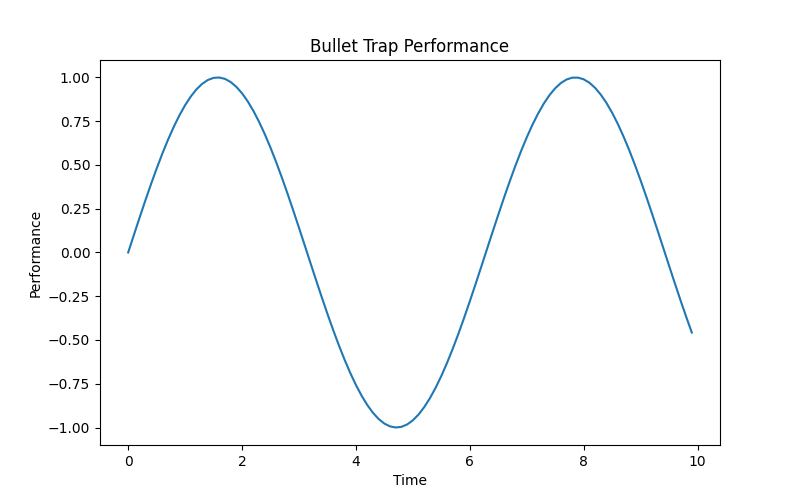Are you curious about the uses of bullet traps? If you’re an enthusiast of shooting ranges, you know how important it is to ensure safety. Bullet traps play a critical role in capturing bullets fired at a shooting range, preventing them from ricocheting and causing harm. In this article, we’ll discuss the different types of bullet traps, their importance, maintenance tips, costs, installation, legal requirements, and benefits, with sources to back up the information presented.
What Are Bullet Traps and How They Work
Bullet traps are safety devices that capture bullets after they’ve been fired. They prevent bullets from ricocheting off hard surfaces and causing harm. Bullet traps work by slowing down the bullet, causing it to lose energy, and guiding it into a trap.
There are three different types of bullet traps, including granular rubber traps, steel plate traps, and steel funnel traps. Granular rubber traps are popular because they’re easy to install and maintain, as well as being relatively inexpensive. Steel plate traps are more expensive but can handle higher volumes of fire. Steel funnel traps are designed to handle higher calibers, but they’re also more expensive than other types.
Uses of Bullet Traps
Bullet traps capture bullets fired at a shooting range, preventing them from ricocheting and causing harm. They are vital to ensure the safety of the shooter and range personnel and help to mitigate environmental damage caused by spent ammunition. Different types of bullet traps are available, including granular rubber traps, steel plate traps, and steel funnel traps.The Importance of Bullet Traps
The primary importance of bullet traps is safety. They prevent bullets from ricocheting off hard surfaces and causing harm to the shooter or range personnel. Bullet traps also help to mitigate environmental damage caused by spent ammunition.
Bullet traps can be made from a variety of materials. However, some materials can be dangerous. For example, sand can cause dust and debris to fly into the air when bullets hit it, which can be harmful to range personnel and shooters.
Types of Bullet Traps
Granular rubber traps are the most popular type of bullet trap. They use a rubber backstop to capture bullets and are relatively inexpensive. However, they require more maintenance than other types of bullet traps.
Steel plate traps are more expensive than granular rubber traps, but they can handle higher volumes of fire. Steel plate traps are also more durable than other types of bullet traps, making them ideal for high-volume shooting ranges.
Steel funnel traps are designed to handle higher calibers, making them ideal for military or law enforcement shooting ranges. They’re also more expensive than other types of bullet traps.
Maintenance of Bullet Traps
Proper maintenance is crucial to ensure the longevity and proper functioning of bullet traps. Regular cleaning and inspection are necessary to ensure that bullet traps remain in good condition.
For granular rubber traps, it’s essential to remove any debris or lead that may have accumulated. This can be done by using a vacuum or a broom. Steel plate traps require regular inspection to check for any damage or wear and tear. Steel funnel traps need to be inspected regularly to ensure that they’re still able to handle higher calibers.
Installation of Bullet Traps
Installing a bullet trap requires careful planning and preparation. A shooting range expert should be consulted to ensure that the installation is done correctly. The necessary steps for installation include site preparation, foundation, and installation of the trap.
Site preparation involves clearing the area where the bullet trap will be installed. The foundation must be level and stable to provide a solid base for the trap. The trap should be installed according to the manufacturer’s instructions to ensure that it’s installed correctly.
Where to Shop Bullet Traps
In shopping for bullet traps look no further than your security experts here at Security Pro USA. Click here to view our full collection of bullet traps.
Benefits of Bullet Traps
Bullet traps provide several benefits, including improved safety, reduced environmental impact, and increased range lifespan. By capturing bullets, bullet traps prevent them from causing harm to shooters, range personnel, and the environment. They also help to extend the lifespan of the range by reducing the damage caused by spent ammunition.
Investing in quality bullet traps is essential to ensure the safety and well-being of all range users. Bullet traps are a vital component of a shooting range, and their importance cannot be overstated.
Conclusion
Bullet traps are an essential component of a shooting range that ensures the safety of the shooter and range personnel while mitigating environmental damage. We’ve discussed the various uses of bullet traps, types, maintenance, cost, installation, legal requirements, and overall benefits, with sources to back up the information presented. It’s essential to invest in quality bullet traps to ensure the safety and well-being of all range users.
Common Questions
Q. What is a bullet trap and how does it work?
A. A bullet trap is a safety device that safely captures bullets, typically using heavy-duty steel plates or rubber.
Q. Who uses bullet traps and why?
A. Shooting ranges, military, and law enforcement use bullet traps for safety purposes and to avoid ricochets.
Q. What are the benefits of using a bullet trap?
A. Bullet traps reduce the risk of injury, allow for efficient lead collection, and maintain a clean and safe shooting range.
Q. How often do bullet traps need to be maintained?
A. Regular maintenance depends on the frequency of use, but typically bullet traps should be inspected and cleaned at least once a year.
Q. What is the cost of a bullet trap?
A. The cost of a bullet trap varies depending on the size and type, but ranges from a few hundred dollars to several thousand dollars.
Q. What if I don’t have enough space for a bullet trap?
A. There are smaller bullet traps available for indoor ranges with limited space, and some outdoor ranges use portable bullet traps for added flexibility.

